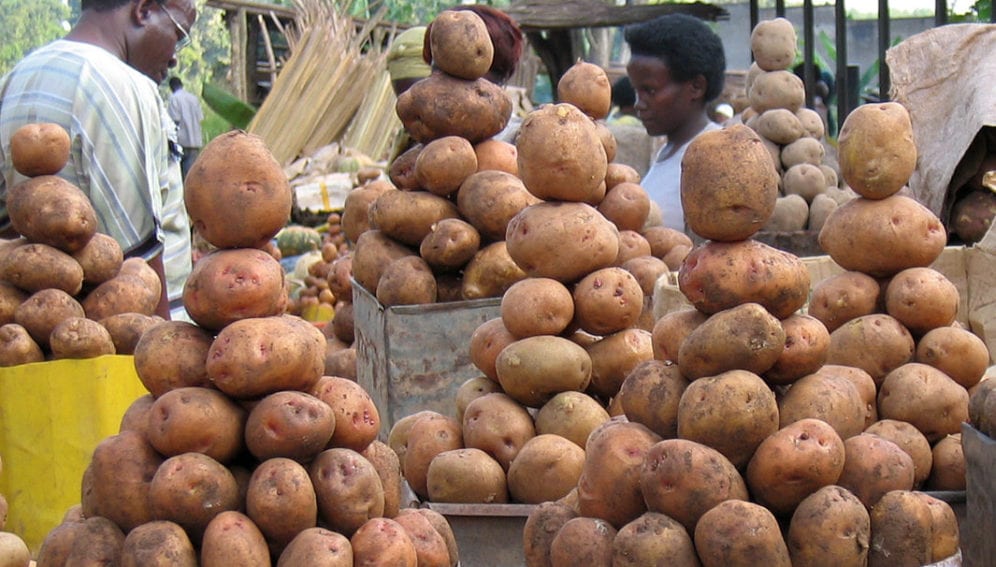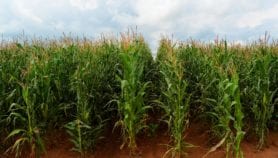By: Esther Nakkazi
Send to a friend
The details you provide on this page will not be used to send unsolicited email, and will not be sold to a 3rd party. See privacy policy.
[KAMPALA] Researchers are implementing a new project to explore increased use of roots, tubers and bananas (RTBs) and technologies to reduce their postharvest losses in Uganda.
A workshop to highlight the research activities to be undertaken was organised last month (1-3 December) in Ntinda, Uganda.
The European Union is funding the US$4 million, three-year project that began last year.
“This project will contribute to improved food security for RTBs and will contribute to the demand of postharvest and processing technologies as well as value chain and capacity development,” Naziri says.
Diego Naziri, International Potato Center (CIP)
Four RTBs — cassava, sweet potatoes, cooking bananas and Irish potatoes — were selected last year, according to Diego Naziri, a postharvest specialist at the International Potato Center (CIP) in Uganda and the leader of the project.
“This project will contribute to improved food security for RTBs and will contribute to the demand of postharvest and processing technologies as well as value chain and capacity development,” Naziri says.
He adds that unlike in Asia, the full potential of RTBs has not been realised in Africa despite their benefits. Naziri explains that Africa lacks technologies for storing RTBs, resulting in an underdeveloped potential for value addition.
Moses Matovu, a research scientist at the National Agricultural Research Organisation in Uganda, notes that farmers and retailers marketing perishable fresh cassava roots are constrained by a very short marketing period of 48 hours, and have to contend with economic losses of up to 90 per cent of the initial value.
The researchers indicated that they would test existing technologies to prolong the shelf life of fresh cassava roots for more than seven days using high relative humidity storage, whereby healthy cassava roots are dipped in a household bleach, packed in polyethylene bags and maintained at high humidity in a cool environment.
“These technologies will be investigated for their effectiveness in extending the shelf life of roots and marketing models through the open market and supermarkets,” says Matovu.
Enoch Kikulwe, an associate scientist at Biodiversity International, Uganda, says research on cooking bananas will reduce postharvest losses by promoting varieties with a longer shelf life and better postharvest handling properties.
The project will pilot a new weight-based pricing system and promote different consumer products, including peeled and preserved bananas, Kikulwe adds.
Researchers will develop simple and affordable silage making technologies for conserving sweet potato roots and vines unknown to most pig producers in Uganda will be developed, says Danilo Pezo, project leader, smallholder pig value chains development, International Livestock Research Institute, Uganda.
Monica Parker, a scientist with CIP, says they would assess postharvest innovations and gender-sensitive approaches to enable value chain actors strengthen opportunities and access other outlets besides those available for Irish potatoes.
Mathias Tushabeomwe, a farmer from Isingiro, Uganda, explains that technologies such as those for weighing crops are valuable.
“We sell to a refugee camp and those taking bananas to Juba in South Sudan and to South Africa,” says Tushabeomwe. “They come with their boxes and we weigh the bananas]. The price is higher [now].
Disclaimer: The International Potato Center sponsored Esther Nakkazi to attend the three-day workshop that discussed the project in Ntinda, Uganda.
This article has been produced by SciDev.Net's Sub-Saharan Africa desk.














